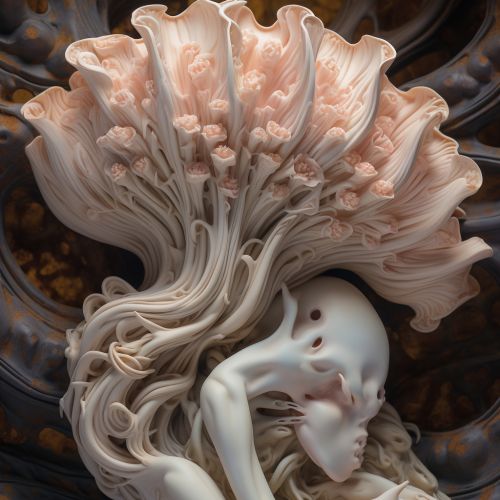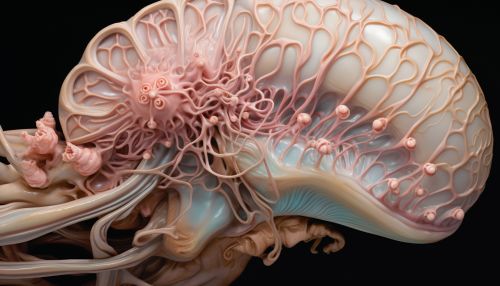Brainstem
Anatomy
The brainstem is a region of the brain that connects the cerebrum with the spinal cord. It consists of three main structures: the medulla oblongata, the pons, and the midbrain. Each of these structures plays a crucial role in transmitting messages between the brain and the rest of the body, as well as controlling basic body functions such as breathing, swallowing, heart rate, blood pressure, consciousness, and whether one is awake or sleepy.


Medulla Oblongata
The medulla oblongata, often simply referred to as the medulla, is the lowermost part of the brainstem. It is a cone-shaped neuronal mass responsible for autonomic (involuntary) functions ranging from vomiting to sneezing. The medulla contains the cardiac, respiratory, vomiting and vasomotor centers and therefore deals with the autonomic functions of breathing, heart rate and blood pressure.
Pons
The pons is a part of the brainstem that links the medulla oblongata and the thalamus. The pons contains nuclei that relay signals from the forebrain to the cerebellum, along with nuclei that deal primarily with sleep, respiration, swallowing, bladder control, hearing, equilibrium, taste, eye movement, facial expressions, facial sensation, and posture.
Midbrain
The midbrain or mesencephalon is the most rostral part of the brainstem and is connected to the cerebrum and the hindbrain. The midbrain controls many important functions such as the visual and auditory systems as well as eye movement. Portions of the midbrain called the red nucleus and the substantia nigra are involved in the control of body movement.
Functions
The brainstem has many basic functions including heart rate, breathing, sleeping, and eating. It also plays a role in conduction. All information relayed from the body to the cerebrum and cerebellum and vice versa must traverse the brainstem. The ascending pathways coming from the body to the brain are the sensory pathways, and include the spinothalamic tract for pain and temperature sensation and the dorsal column, fasciculus gracilis, and cuneatus for touch, proprioception, and pressure sensation. The facial sensations have similar pathways, and will travel in the spinal tract of the trigeminal nerve.
Clinical Significance
Damage to the brainstem can lead to a number of different clinical conditions, depending on the severity and location of the damage. For instance, damage to the midbrain can result in movement disorders or sensory processing problems, while damage to the medulla can interfere with vital life processes such as breathing and heartbeat. Brainstem stroke, brainstem glioma, and Moebius syndrome are all conditions that can result from brainstem damage.
